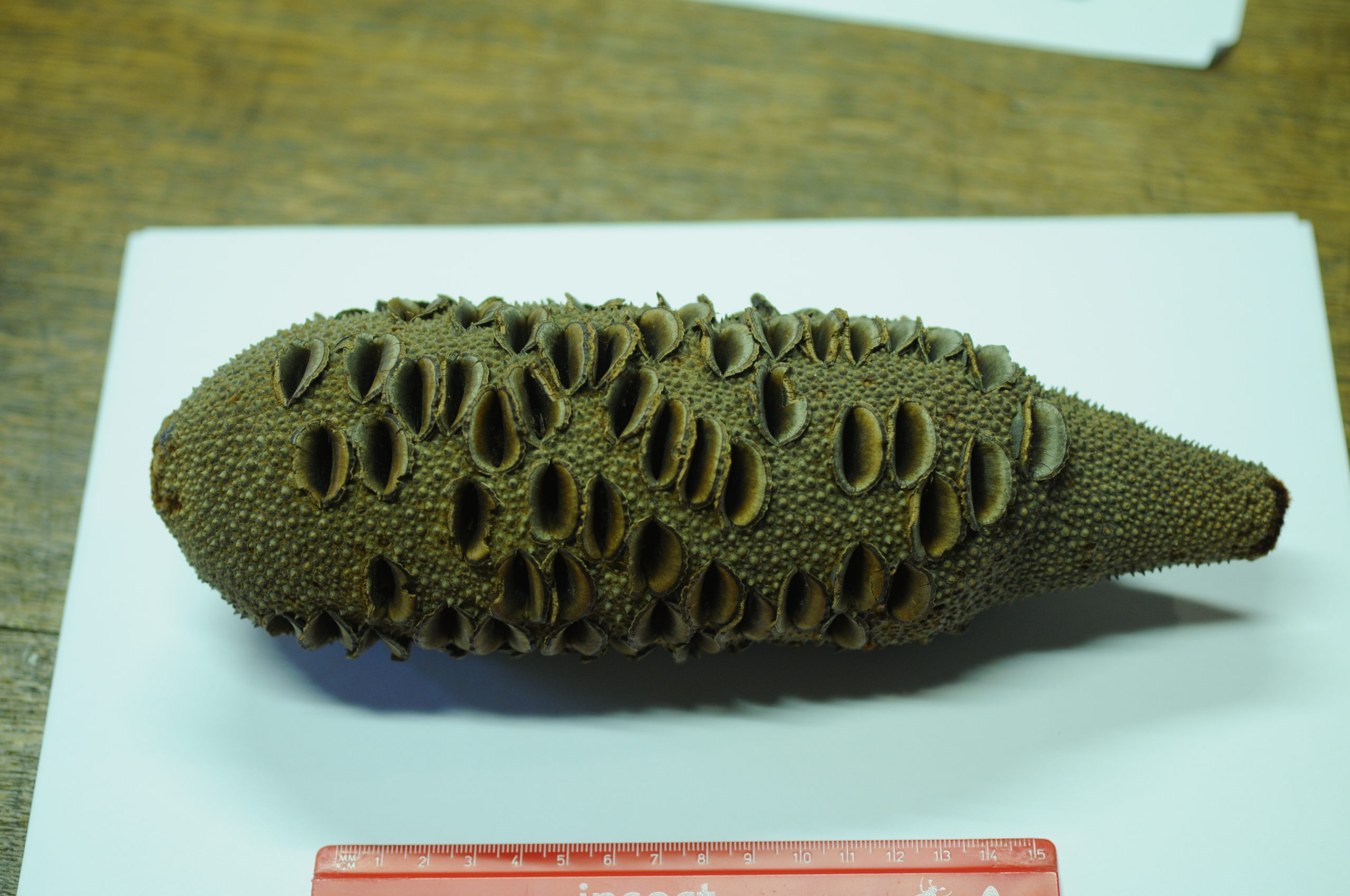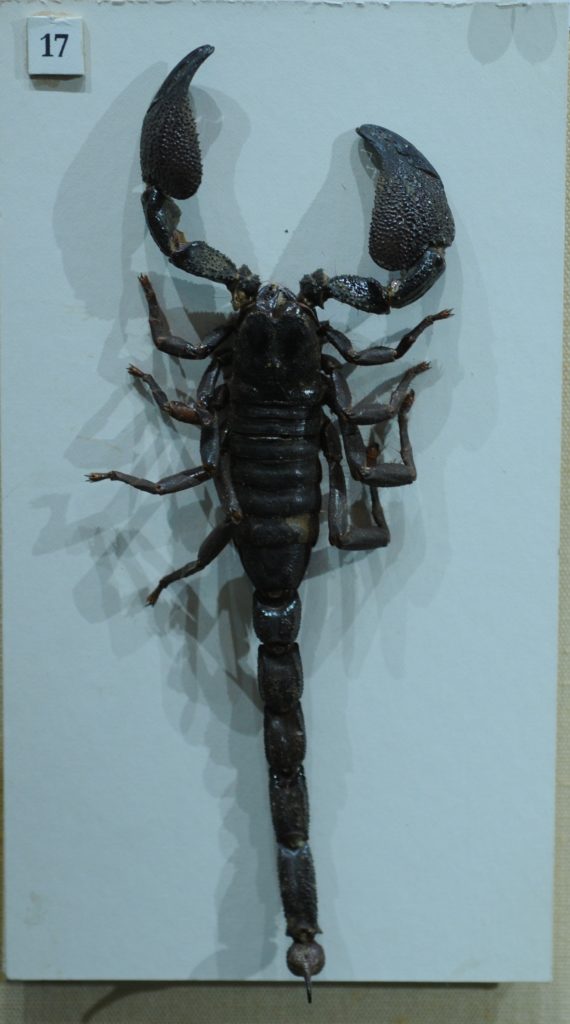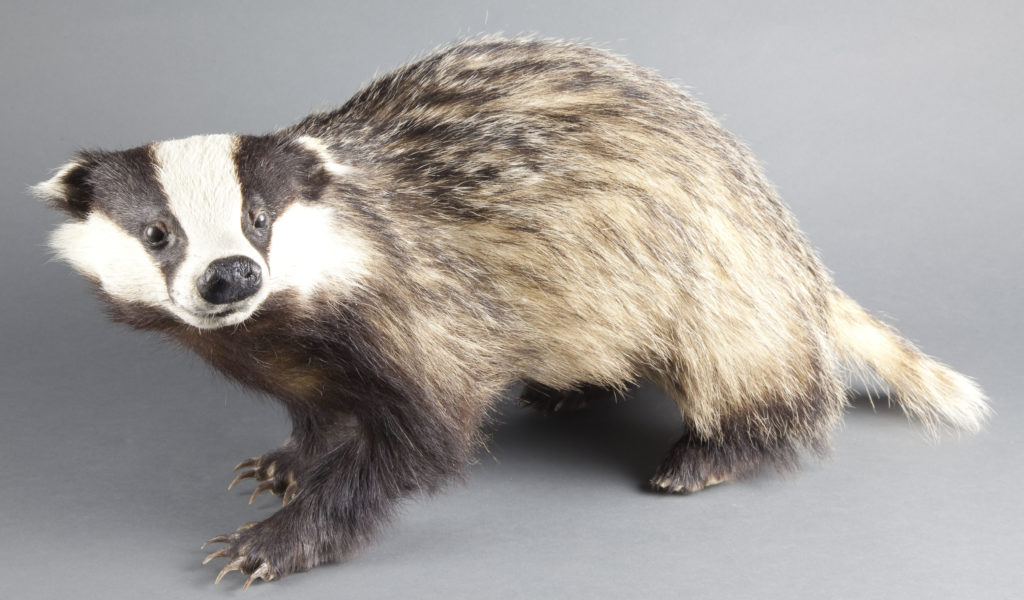Do you know who these claws belong to?
Did you know what last week’s object of the week was?
On the desk in Banks’ cabin you can see two seed cones from plant species that were named after him.
The genus Banksia is made up of flowering plants that are all found in Australia. They can reach great heights (some up to 30 metres tall) and have spectacular flower heads that produce large amounts of nectar, providing food for many birds, insects and mammals.
Banks collected the first Banksia specimens in 1770 on his voyage around the world aboard HMB Endeavour. The cone above belongs to the species Banksia grandis (Bull Banksia). It is incredibly hard and quite a size as you can see by the scale in the photograph. The large holes are where the cone bursts open to eject seeds, usually in response to a bushfire.





